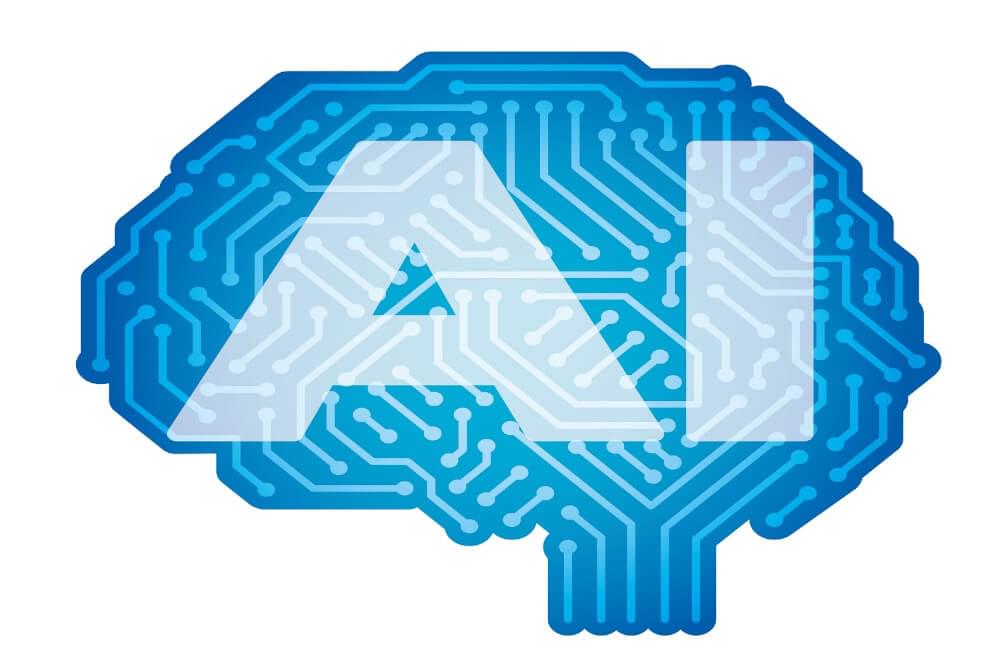accessibility tutorials
An In-Depth Guide To Generative AI
Hey there, tech-savvy trailblazers and curious minds! Brace yourselves because there’s a groundbreaking force revolutionizing the world as we know it: Generative AI. It’s not just a passing trend it’s a game-changer that’s here to stay, reshaping the very fabric of businesses worldwide.
But let’s face it, staying ahead of the curve in this rapidly evolving technological landscape can feel like navigating a maze. The possibilities seem endless, and the choices overwhelming. That’s where we come in!
This comprehensive guide will dive into the mysterious world of Generative AI. We’ll unravel its special applications, explore real-life use cases, and even delve into future projections that will blow your mind. Think of us as your trusty AI compass, helping you navigate the realms of possibility and empowering you to make informed decisions for your business.
What is Generative AI?

Are you ready to dive into the what is generative AI?
At its core, Generative AI is like a magician that conjures up new content out of thin air. It’s a powerful class of artificial intelligence algorithms that can generate fresh and captivating creations across various media types. From stunning images that will leave you in awe to captivating poetry that stirs your emotions, Generative AI has the potential to reshape the boundaries of what’s possible.
But what is generative AI, and how does it work, you ask? Well, these algorithms are no ordinary machines. They have the remarkable ability to learn from existing data, absorbing its patterns and structures like sponges.
Let’s see the fundamental algorithms that have shaped generative AI:
1. Generative Adversarial Networks (GANs)
Inside GANs (Generative Adversarial Networks) lies an intriguing dance between two neural networks: the generator and the discriminator. Think of them as yin and yang, each crucial in creating new data.
First up, we have the generator. It taps into its vast training knowledge and bends the rules of reality, crafting new instances that mirror the patterns and structures of the training dataset. The generator’s creations need to pass the ultimate test of authenticity. That’s where the discriminator comes in. It meticulously examines the generator’s handiwork and determines how realistic and accurate it is.
The generator polishes its skills, and the discriminator sharpens its judgment. With each iteration, these networks push the boundaries of what’s possible, converging towards a state where the generated samples are indistinguishable from the real deal.
2. Variational Autoencoders (VAEs)
VAEs have a neural network divided into two ingenious components, each with a vital role to play in the creative process:
- The Encoder: An encoder is like a gateway to the latent space, where raw input data undergoes a remarkable transformation. This neural network skillfully maps the input data to a compressed representation in the latent space, unlocking the potential for generating diverse and captivating samples.
- The Decoder: As the counterpart to the encoder, the decoder possesses the extraordinary ability to translate information from the latent space back into the original input space. Armed with this power, the decoder recreates and generates entirely new data points, breathing life into the virtual canvas.
These two neural networks join forces, collaborating and learning through a powerful technique called the reparameterization trick. This innovative approach allows them to evolve hand in hand, refining their skills and synchronizing their efforts to produce captivating and varied outputs.
3. Transformer Networks
At the core of Transformer Networks lies a unique self-attention technique, which grants the network an unparalleled ability to analyze and comprehend different aspects of the input sequence. This capability makes Transformer Networks particularly adept at tackling complex tasks such as machine translation. With contextual understanding, these networks can decipher the subtle intricacies of the input text, unraveling its meaning within the broader context and effortlessly bridging the gaps between languages.
Intelligent Models Used by Generative AI

Generative artificial intelligence is home to remarkable technologies and frameworks, each offering amazing capabilities and paving the way for astonishing creations. Let’s explore some of the intelligent models and frameworks:
1. Deep Learning Frameworks
Among the leading deep learning frameworks, TensorFlow, PyTorch, and Caffe stand tall, each bringing its own set of strengths to the table. TensorFlow, renowned for its scalability and versatility, empowers developers with a comprehensive suite of modules and libraries for various AI tasks. With its dynamic graph construction and seamless integration, PyTorch enables researchers to push the boundaries of generative models. While Caffe, celebrated for its efficiency and speed, excels in image and vision-based applications. With these powerhouses at your disposal, the possibilities of generative AI are boundless.
2. Markov Chain Monte Carlo (MCMC)
In generative models, one method that stands out for its statistical prowess is Markov Chain Monte Carlo (MCMC). By harnessing the power of probability distributions, MCMC unleashes its sampling magic to generate diverse and representative samples. MCMC takes on the challenge of exploring complex distributions and capturing their intricate structures through the interplay of Markov chains and Monte Carlo methods.
3. Reinforcement Learning
Reinforced Learning, renowned for its ability to learn from the consequences of their actions, has found a special place in the hearts of generative model enthusiasts. Picture yourself immersed in games and simulations, where AI models take center stage, evolving and honing their skills with each successive interaction. Through reinforcement learning, these generative models push the boundaries of what’s possible, continuously improving and adapting to conquer new challenges.
Check this out: What is an AI Audiobook Narration?
Examples of Generative AI Tools

AI Generative tools are diverse. Explore GPT, Jasper, AI-Writer, and Lex, as they breathe life into the compelling text. Witness the exquisite artistry AI image generators like Dall-E 2, Midjourney, and Stable Diffusion as they weave stunning visual masterpieces.
Let the harmonious melodies of Amper, Dadabots, and MuseNet serenade your senses. Unleash the power of CodeStarter, Codex, GitHub Copilot, and Tabnine as they effortlessly transform code into innovation. And experience the transformative capabilities of Descript, Listnr, and Podcast.ai as they bring voices to life. Prepare to be amazed as these generative AI tools open up a world of limitless possibilities.
Popular Generative AI Tools
Let’s take a look at some of the well known generative artificial intelligence tools:
1. Dall-E
Dall-E is an AI image generator that blurs the boundaries between words and images its creativity is unlimited. Trained on a vast dataset of images and their textual descriptions, Dall-E exemplifies the remarkable capabilities of generative AI.
It is built upon the foundation of OpenAI’s renowned GPT implementation. This groundbreaking technology first captured imaginations in 2021. And now, behold the arrival of Dall-E 2 in 2022. This more refined and awe-inspiring version empowers users to gather breathtaking imagery in diverse styles by offering their prompts.
2. ChatGPT
In November 2022, OpenAI unleashed a revolutionary creation powered by its exceptional GPT-3.5 implementation. What sets it apart is its unique chat interface, enabling users to interact and provide interactive feedback for fine-tuning text responses.
Unlike its predecessors, GPT-3.5 was not limited to an API, opening up a new realm of possibilities. But the innovation continued. On March 14, 2023, the highly anticipated GPT-4 made its grand entrance, surpassing all expectations.
Industrial Applications

Now, let’s explore the exciting ways in which generative artificial intelligence can profoundly impact various industries. From healthcare to entertainment, finance to manufacturing, the possibilities are endless. Brace yourself for a journey through the potential of generative AI as we delve into its potential to revolutionize industries, spark innovation, and unlock untapped opportunities.
1. Image and Video Generation
In industries, film production, video game development, virtual reality, and digital marketing converge, harnessing the potential of AI image generator and AI video maker to create stunning, lifelike images and videos that captivate audiences like never before. The future of imagery is here, and the illusions of generative AI powers it.
2. Language and Text Generation
From content creation and marketing strategies to enhancing customer service experiences, generative AI brings new dimensions to Natural Language Understanding and text generation, revolutionizing industries and captivating audiences. Witness the written word come alive with the limitless possibilities of generative AI.
3. Music and Audio Generation
Musical innovation takes the lead in creativity and technology with generative AI models. From crafting captivating melodies to shaping immersive audio blogs, generative AI unlocks endless possibilities for music production and sound design and even elevates the capabilities of voice assistants and customer service chatbots.
4. Gaming
Generative AI is a master in creating one-of-a-kind game assets, from influencing characters to perfect environments and lifelike textures. Advance gaming experience with generative AI in video game development and creating unforgettable virtual reality experiences.
5. Finance Firms
Generative AI provides advanced fraud detection systems where banks, finance firms, and businesses can gain unparalleled insights by analyzing transactions within an individual’s history. Unlock the power of generative AI to enhance security and safeguard against fraudulent activities.
6. Legal Firms
Generative AI in the legal field, where top-notch technologies empower legal firms to revolutionize contract design, evidence analysis, and argument formulation. Embrace the future of law with intelligent AI tools by your side.
7. Manufacturers
Experience the manufacturing revolution with generative AI, as it harnesses the collective power of cameras, X-ray imaging, and advanced metrics to pinpoint defective parts and uncover root causes with unprecedented accuracy and cost-efficiency. Boost quality control to new heights with AI-driven insights.
8. Architecture
Empower your architectural firm with the super awesome capabilities of generative AI, enabling you to accelerate the design process and prototypes. Embrace efficiency and creativity as you revolutionize architectural innovation with AI-driven solutions.
Benefits of Generative AI

Discover the full potential of your business with generative artificial intelligence, a game-changing technology that revolutionizes content creation and workflow optimization. Explore the numerous benefits that come with implementing generative AI, including:
- Automating content writing with an AI SEO writer, freeing up time and resources.
- Improves reading speed with text to speech technology.
- Effortlessly managing email responses, boosting productivity.
- Enhancing technical query handling for better customer support.
- Creating lifelike representations of individuals for various applications.
- Transforming complex information into engaging narratives.
- Simplifying content creation in specific styles amplifies your brand’s impact.
Shortcomings of Generative AI
While generative AI holds immense promise, it’s crucial to know its limitations and potential pitfalls. Early implementations have shed light on the challenges that arise from specific use case implementations. Understanding these limitations is essential for responsible and effective usage of generative AI. Here are some key considerations to keep in mind:
- Identifying the source of generated content can be complicated.
- Assessing the bias present in sources can be challenging.
- Adapting generative AI to new circumstances may require careful fine-tuning.
- Results may inadvertently perpetuate bias, prejudice, or hateful content.
Best Practices
The power of generative artificial intelligence requires adopting best practices tailored to specific modalities, workflows, and goals. Whether you’re working with text, images, or code, certain principles apply to ensure accuracy, transparency, and usability. Here are some recommended practices to achieve these objectives:
- Validate the accuracy of generated content by cross-referencing primary sources.
- Be mindful of potential bias introduced by the generative AI process.
- Verify the quality of AI-generated code and content using additional tools.
- Understand the strengths and limitations of each generative AI tool you employ.
- Familiarize yourself with common failure modes and implement suitable workarounds.
Latest News and Trends
The pressing need for AI regulation and governance has gained widespread attention, with industry leaders emphasizing the global priority of addressing the risks posed by AI. Calls have been made for companies developing powerful AI products to be registered with governments and ethical training to be provided to AI practitioners.
A recent report by researchers and nonprofits recommended early evaluation of AI models for extreme risks and proactive mitigation measures. Meanwhile, the demand for AI-driven technology has surged, highlighted by Nvidia’s impressive first-quarter revenue of $7.19 billion and the market value reaching $1 trillion following the success of ChatGPT. In another notable development, Snowflake’s acquisition of Neeva, a generative AI-powered search engine, opens up new possibilities for broader use of the technology across data management.
It’s a Wrap!
Generative AI is revolutionizing industries across the board, from content creation and customer service to fraud detection and game development. As we navigate the limitless possibilities of generative AI, it is crucial to understand its limitations, adopt best practices, and prioritize ethical considerations.
With continued advancements and responsible implementation, generative AI holds power to reshape our world, empowering businesses and individuals to unlock unprecedented creativity and efficiency. Be a part of generative artificial intelligence and stay ahead in the ever-evolving digital landscape!









